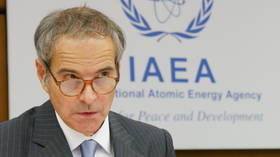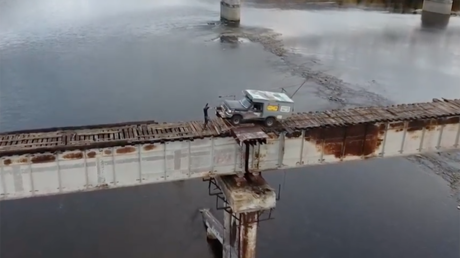Fish addiction studies & Bob Dylan sculpture: Rand Paul exposes Feds’ latest extravagant spending of US taxpayer millions
The federal government is finding new and creative ways to spend US tax dollars, even as public debt soars into the trillions. Fiscal hawk Senator Rand Paul (R-Kentucky) took aim at some of the most absurd programs out there.
Issued on Monday, the libertarian-leaning lawmaker’s quarterly report on government waste tracks some of the more outrageous uses of federal cheese, totaling over $230 million, ranging from academic studies on drug-addicted fish to, well, literal cheese.
A big slice of cheese
Last year, the US Agency for International Development (USAID) spent a cool $22 million subsidizing cheese production in the highlands of southwest Serbia, aiming to teach farmers in the region about “questionable practices…such as adding water or baking powder to the milk or skimming the fat.”
While the Serbian cheese-makers are surely fine by the multi-million dollar scheme, American dairy farmers might have different ideas. And with the United States in the middle of a massive, 1.4 billion-pound cheese surplus, it’s not clear how any of it is America’s business.
The report found fishy spending in other areas as well. To the tune of over $708,000, the National Institutes of Health (NIH) funded research in London to study a burning question: what happens when zebrafish get addicted to nicotine? Though the study hoped to uncover genetic links to dependency and addiction, some US taxpayers may want to know why they should foot the sizable bill.
How can a Zebrafish smoke anyway? Wouldn't the water put the cigarette out? Maybe they should have spent the money on vape pipes! 🦓🐟
— Linda Waters (@LindaWaters24) November 26, 2019
Taxpayers funded another costly NIH study, this time over $4.6 million, looking at whether drinking too much alcohol could result in injury. It turns out it can.
“At a time when we have to borrow from China just to pay our bills, is there really a reason this research, especially when so much common sense is involved, at the very least could not have been conducted without the taxpayers' resources?” Paul asked in the report.
Also on rt.com ‘USA ROCKS! Enjoy!’ National debt surpasses terrifying $23 TRILLION as Trump praises ‘greater than expected’ jobs & stock surgeSome of the big spending went toward more essential supplies, however – such as an $84,000 sculpture created by music legend Bob Dylan, to beautify the US Embassy in Mozambique. As noted in the report, the State Department devotes 0.5 percent of construction costs on any project to “art acquisition,” regardless of how much money that figure represents, resulting in extravagant waste on artwork few Americans are likely to ever see.
A sculpture by Bob Dylan now lives at an American embassy in Mozambique... but not everyone is thrilled with it.The Art in Embassies program bought the work for $90,000—while federal employees went weeks without pay. https://t.co/MmhGLHnYjhpic.twitter.com/dnIi56nfzt
— Artnet (@artnet) February 6, 2019
Millions down the toilet
The most expensive item on Paul’s list was less outlandish than the other contenders, but nonetheless accounted for millions “[flushed] down the toilet.” Despite “routine service outages, delays, incomprehensible policy choices, and mismanagement of funds,” in 2020 the feds will cut a check for $153 million to Washington DC’s Metro transit service, a notorious squanderer of tax dollars.
Also on rt.com US wasted $15.5bn of taxpayer money in Afghanistan – govt watchdogBetween 2003 and 2017, the Metro blew through approximately $500,000 maintaining a single self-cleaning toilet, but because the transit service lost track of invoices for 2007, 2012, 2013, and 2014, it couldn’t actually provide a solid number. According to the Metro, that spending was necessary because the already-existing bathrooms in the terminal would present “security concerns” to riders. Ultimately, the self-cleaning toilet was abandoned and removed earlier this year.
This self-cleaning toilet cost Metro more than $400K, and it doesn't work anymore. https://t.co/QCfQUMU6u6pic.twitter.com/y8lTPfLegS
— DCist (@DCist) July 29, 2019
“Clearly, [Metro] is a poor steward of public funds, be they federal, state, or local,” Paul said. “Why Americans from across the country are being forced to subsidize the Washington, DC, public transit system’s ineptitude is beyond comprehension.”
Like this story? Share it with a friend!














